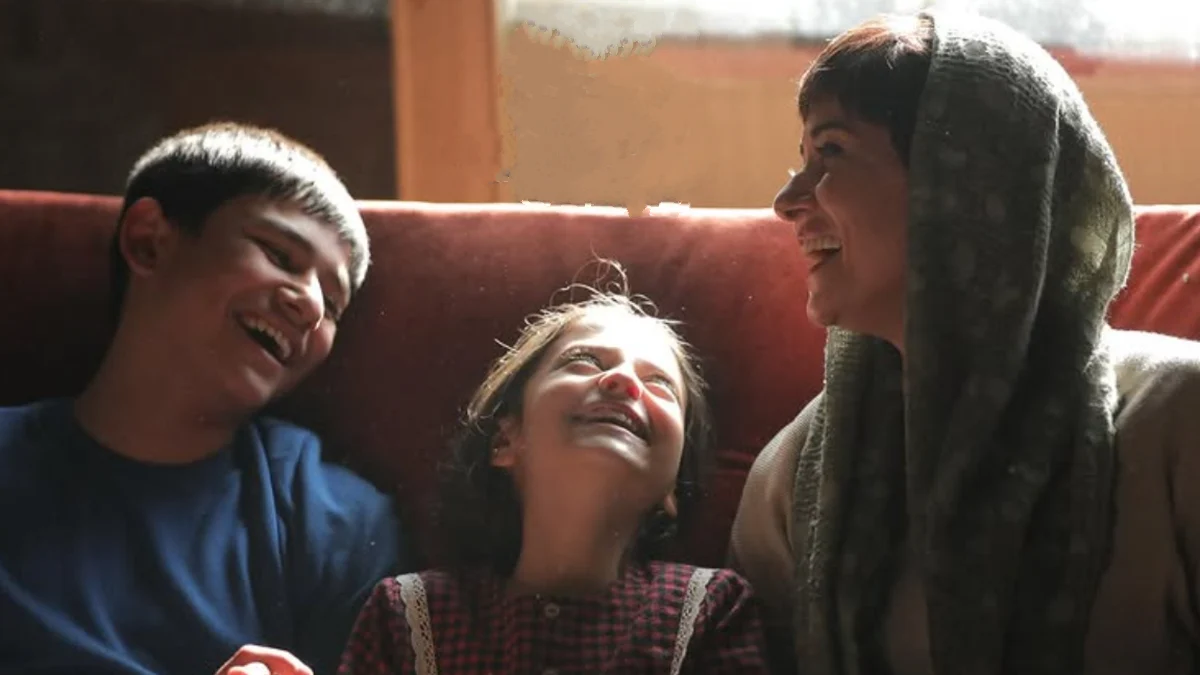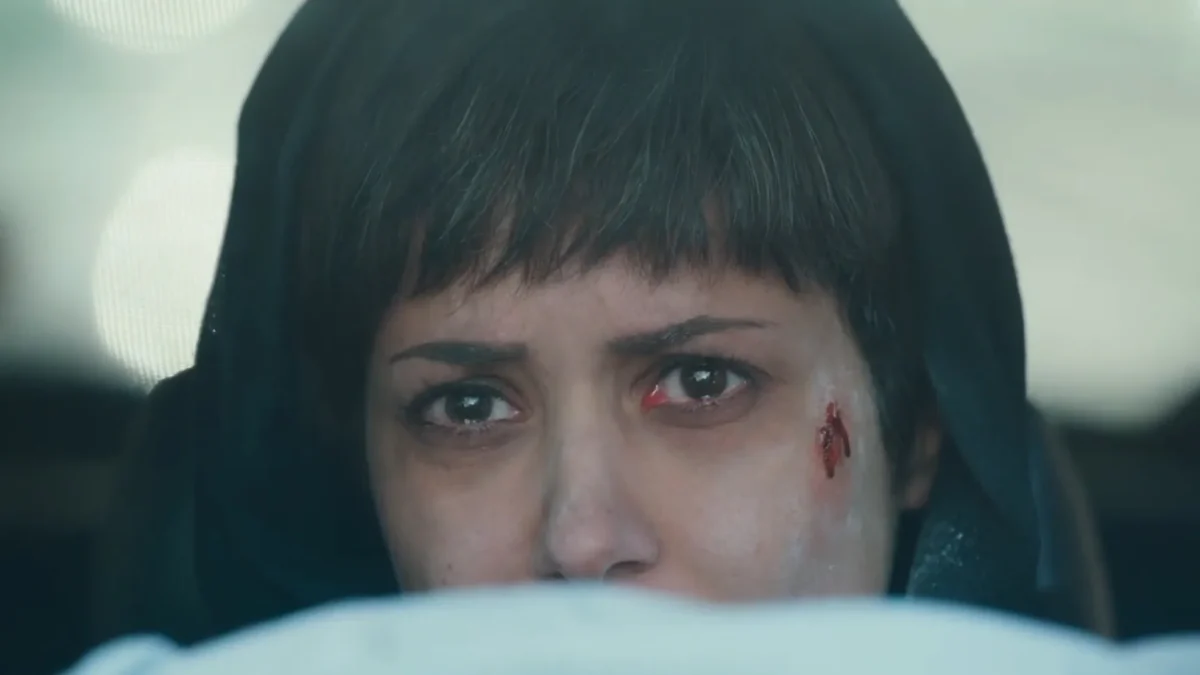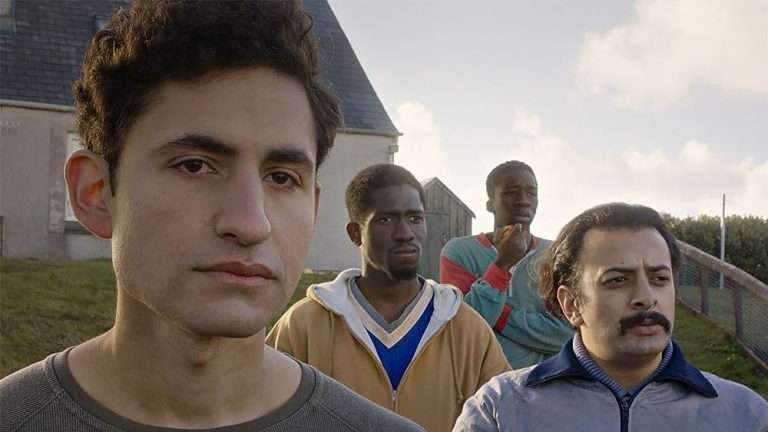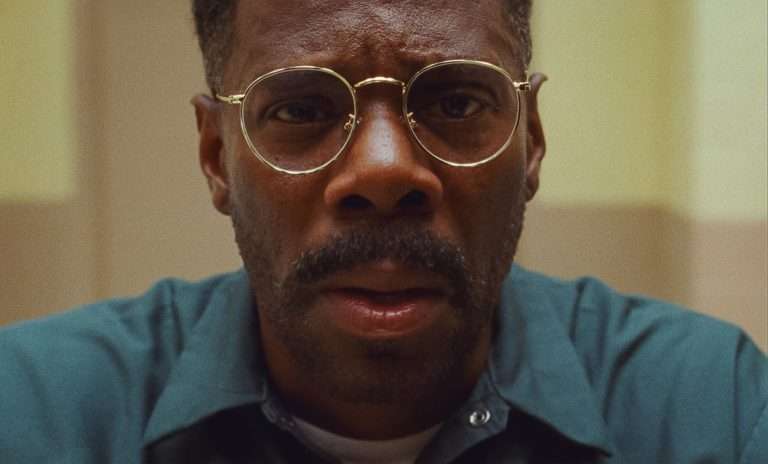Saeed Roustaee’s “Woman and Child” (Original title: Zan va bache, 2025) is undoubtedly the pièce de résistance of this year’s International Film Festival of India, Goa. Placed alongside major contenders like “No Other Choice” (Park Chan-wook), “Father Mother Sister Brother” (Jim Jarmusch), and “It Was Just an Accident” (Jafar Panahi), Roustaee’s film deserved a far more prominent screening slot.
Although several reviews describe it as a psychological drama, centred on a mother’s rage after the death of her child and as a critique of institutional complicity, what many critics overlook is its deeply affecting study of how nearly impossible it is for a parent to move on from such a loss. (Spoilers ahead.)
Mahnaz (Parinaz Izadyar) is a widowed nurse living with her two children, her sister, and her mother. She is also in a relationship with Hamid (Payman Maadi), an ambulance driver of questionable morals. Her son Aliyar (Sinan Mohebi) is a fast-talking, brilliant, mischievous teenager—an agile, charismatic hell-raiser who consistently tops his class and refuses to let anyone get the better of him. He resembles a young Jordan Belfort trapped in a teenage body.
The narrative intensifies when Aliyar is suspended from school for misbehaviour and consequently barred from a school trip. At that very moment, Hamid insists that his parents meet Mahnaz, on the condition that she hides all evidence of her children from her previous marriage. This, absurdly, includes hiding the children themselves.
Mahnaz makes the fatal mistake of giving in to Hamid’s demands. She leaves her kids with her late husband’s father. During the meeting, Hamid leers at Mahnaz’s younger sister, Mehri (Soha Niasti), and then abruptly stops responding to Mahnaz’s calls. When Mahnaz’s mother (Fereshteh Sadre Orafaee) contacts Hamid’s family, she learns he is infatuated with Mehri and intends to marry her instead. Mahnaz’s misfortunes escalate when she receives a call from the hospital, only to discover that Aliyar has died. The explanation she is initially given is far from the truth, as later revelations show.

While You’re Here: Close-Up on Abbas Kiarostami: 10 Best Movies, Ranked
Devastated, Mahnaz lashes out at everyone around her. She blames Aliyar’s teacher and rams her car into his, intending to kill them both. Mahnaz distances herself from Mehri, accusing her of beginning a relationship with Hamid. She blames her mother for trying to move on too quickly. Yet, amid this fury, she desperately tries to uncover the truth behind Aliyar’s death.
First, she is told that Aliyar jumped after learning his belongings were being thrown out. Then, her sister-in-law claims Aliyar reacted to rumors about Mahnaz’s possible engagement, a claim confirmed by her daughter, Neda (Arshida Dorostkar). Later, Mahnaz discovers that Aliyar was being beaten with a belt by her ex-father-in-law, which may have pushed him to jump.
Although she attempts to file a case, she is dismissed because belt-beating is not legally interpreted as violence severe enough to lead to death. As the film progresses, Mahnaz’s bitterness consumes her. She refuses to participate in Mehri and Hamid’s wedding, repeatedly insisting that Hamid is not the man Mehri believes he is, even forbidding her from naming her son Aliyar, fearing that doing so would erase her own Aliyar from memory.
She sabotages Hamid’s career by exposing his illicit practice of letting people stay inside his ambulance for money. She even tries to undermine his marriage to Mehri, but this time Hamid retaliates brutally. He joins forces with Mahnaz’s ex-father-in-law and the teacher she attempted to kill, trying to take Neda away from her by labeling her an unfit mother.
Although Mahnaz ultimately overcomes this assault, when her ex-father-in-law is later admitted to the hospital with lung failure, she attempts to kill him as revenge. He survives. Mahnaz returns home shaken, finally accepting Mehri’s son Aliyar and at last granting forgiveness. At its core, the film is a profound psychological meditation on motherhood. The acts that precipitate Aliyar’s death appear ordinary when viewed individually, but once he dies, Mahnaz obsessively questions everyone involved.
No one can be definitively held accountable. The narrative is built on a chain of “what ifs”: What if Aliyar hadn’t been suspended? What if Hamid hadn’t demanded that the children be hidden? What if Mehri had told her about Aliyar smoking or possibly using drugs? Mahnaz seeks to hold everyone responsible, but the truth is that none of these factors alone can explain the tragedy. As the primary caregiver, she believes she should have protected him, and because she failed, she directs her guilt outward.
The film also subtly yet powerfully critiques institutional failures. Roustaee, shaped by his own struggles with state censorship, lays bare the arbitrariness of legal systems. In a pivotal scene, a lawyer explains that beating someone with a belt does not constitute grounds for a homicide case, whereas threatening them with a gun would. The absurdity is so palpable that the audience can only respond with a bitter smile.
When Hamid and others attempt to remove Neda from her mother’s custody, the hypocrisy of the legal system is exposed again: a child is almost placed in the care of the same man who helped cause her brother’s death. Similarly, Mehri points out that if she divorces Hamid, she will lose custody of her son once he turns seven—a legal rule that can be easily manipulated depending on who chooses to invoke it.
Also Check Out: All Asghar Farhadi Movies Ranked from Worst to Best

“Woman and Child” is also a sharp examination of gender studies. Roustaee, through deceptively simple narrative choices, exposes the extent of male dominance in the society he portrays. Aliyar, like Hamid, talks his way out of consequences. Mahnaz often excuses his behaviour. When he flirtatiously harasses one of her nurse colleagues, she does not correct him but instead asks her friend to look after him during Hamid’s parental visit. Hamid himself exemplifies the stripping of women’s agency.
After charming Mahnaz into a relationship, he instantly shifts his attention to Mehri upon seeing her beauty. Once he impregnates Mehri, he ensures she has no option but to marry him. When Mahnaz advises Mehri to leave, Hamid retaliates by attempting to take Neda away, calling Mahnaz mentally unstable. Her ex-father-in-law, too, is directly implicated in causing her son’s death. The film continuously juxtaposes women’s attempts to claim agency with the unrelenting pressure of patriarchy.
The film’s depth emerges through its melodrama, which Roustaee layers with nuance and emotional precision. Though visually distinct from the style of earlier Iranian masters, its raw emotionality—sometimes reminiscent of heightened TV drama—carries rich social critique. Through its examination of motherhood, the fragility of agency, institutional hypocrisy, and the psychological turmoil of grief, “Woman and Child” stands out as a masterful work.



![Dark Blood [2021] Review – Cycle of Fear and Anger comes full circle](https://79468c92.delivery.rocketcdn.me/wp-content/uploads/2021/10/Dark-Blood-2021-768x461.jpg)
![The Cow [1969] – A Pioneering Masterpiece of Iranian Cinema](https://79468c92.delivery.rocketcdn.me/wp-content/uploads/2016/11/The-Cow-cover-768x432.jpg)
![Tiger King [2020] Netflix Review – Deadly Abhorrent Creatures and Poor Big Cats](https://79468c92.delivery.rocketcdn.me/wp-content/uploads/2020/03/Tiger-King-2020-768x432.jpg)

![Fury [1936] Review – The Thundering American Debut of the Great German Film-Maker](https://79468c92.delivery.rocketcdn.me/wp-content/uploads/2021/06/Fury-1936-768x612.jpg)
